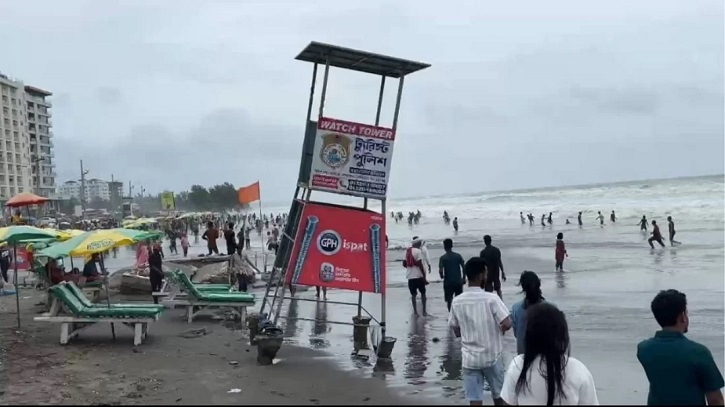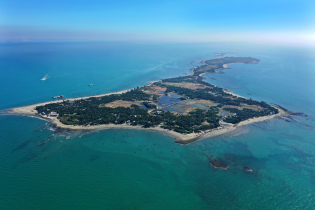
Rough weather conditions have battered Cox’s Bazar coastline for over two consecutive weeks, with unusually high tides breaching into nearby localities. The intensity of the waves has caused significant erosion across several points of the beach, uprooting thousands of casuarina trees and damaging various coastal structures. Police boxes, watch towers, and temporary shops along the shore have been swept away.
The damage is attributed to a recent low-pressure system and a rare astronomical high tide, resulting in unprecedented tidal surges. Many more structures remain at risk. Continuous erosion has sparked deep concern among local tourism-related businesses that rely on the beach for economic activity. Experts cite climate change as a key factor behind the worsening coastal vulnerability.
Muhammad Osman, senior trainer of the Sea Safe Lifeguard team stationed on the beach, reported that even protective geobags are failing to withstand the waves. The tide has breached through tree lines and moved steadily inland over the past decade—an estimated three kilometers of coastline has already been lost. Tourists are now discouraged from entering the water, with many choosing instead to observe the rough sea from a distance and capture photos and videos. In a protective measure, recreational equipment such as jet skis and beach carts have been removed from the shore. During peak tides, water levels rise by four to five feet, prompting lifeguards, beach staff, and tourist police to issue repeated warnings via loudspeakers.
A field visit to areas including Shaibal, Laboni, Sugandha, Kolatoli, and Kabita Chattar confirmed the scale of the damage. One watchtower has already been lost to the sea, and a nearby restaurant is at risk. At Shaibal Point, fallen casuarina trees collapsed onto electric poles, briefly cutting power to surrounding areas. Locals fear further erosion could soon threaten critical facilities such as the international cricket stadium, tourist police office, and the district administration's information and complaints center.
According to the Cox’s Bazar Forest Department, the casuarina plantation stretching from Nazirartek to Himchari began in 1961–62 across 12 hectares of sand dunes and expanded in the 1970s. The forest was not only planted for aesthetic purposes but also as a protective barrier against natural disasters. However, the devastating cyclone of 1991 destroyed more than half of the plantation.
Subsequent reforestation efforts included planting over 750,000 casuarina trees across 300 hectares by 2011. Yet, ongoing erosion and rising sea levels continue to undermine these efforts. As strong waves wash away the sand from tree roots, the casuarinas fall and vanish into the sea.
Md. Habibul Haque, Range Officer of Cox’s Bazar South Forest Division, confirmed that nearly 500 hectares have been planted since 1972–73, but the lack of modern coastal defenses has made the forest increasingly vulnerable. He emphasized that permanent embankments, if constructed under the supervision of the Water Development Board or other agencies, could safeguard both the tree cover and the broader coastal zone.
Nurul Islam, Executive Engineer at the Water Development Board’s Cox’s Bazar office, admitted that annual installation of geobags is not a sustainable solution. A long-term strategy and appropriate embankment system are essential for shoreline protection.
According to Abdul Hannan, Assistant Meteorologist at the Cox’s Bazar regional office, the latest forecast warns of continued heavy rainfall across Chattogram, Khulna, and Barishal divisions due to the active southwest monsoon. The Chattogram region is particularly at risk of landslides.
Additional District Magistrate Md. Shahidul Alam acknowledged the rapidly changing sea conditions during monsoon and said recent low-pressure systems and astronomical tides have caused waves to rise higher than normal, submerging parts of Saint Martin’s, Maheshkhali, and Kutubdia coastlines. He confirmed that several thousand trees have already been uprooted. While nature cannot be resisted, measures are being considered by the district administration to mitigate further loss.





